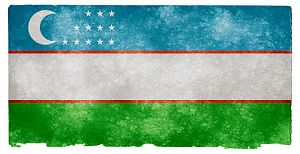Feuds between Russia and the United States over Central Asia are not a frequent occurrence. Central Asia is not a top priority for either, even less of one for the United States. This puts a spotlight on an apparent recent rhetorical squabble between them following Russia’s recent announcement of Tashkent’s possible accession to the Eurasina Economic Union (EAEU). Washington’s reaction to the development came after a delay, but when it did react, Moscow responded immediately.
U.S. Trade Secretary Wilbur Ross asked Uzbek officials who were in Washington for a business forum to weigh their options before making a final decision on the EAEU. Washington hinted it could “complicate and extend” the timeline of Uzbek accession to the World Trade Organization (WTO). While Tashkent held its own response, Russia Prime Minister Dmitry Medvedev did not delay his reaction, stating that the United States was promoting unfair competition in Central Asia. Medvedev also mentioned that although Russia’s activities in the region were an irritant to the United States, Moscow would continue expanding the geography of its union.
Ross’s statement relayed Washington’s discontent with Tashkent’s consideration of EAEU membership. Indeed, Uzbekistan, the region’s largest country, acceding to the organization would signal the region fully leaning toward Russia. Already two regional countries, Kazakhstan and Kyrgyzstan, are EAEU members and if Uzbekistan joins, that means 80 percent of Central Asia’s population would be under the Russia-led organization.
Despite Washington’s warning, Ross’s statement is probably the extent of protest the United States will stage. The U.S. priority in Central Asia is the region is “resistant to becoming jihadist safe havens,” as outlined in the latest U.S. National Security Strategy. Past experience indicates that Washington is unlikely to go beyond diplomatic statements in pushing against the policies of regional states, for fear of derailing its ability to pursue its core priority in the region.
A previous exchange between Russia and the United States over Central Asia took place following U.S. Central Command’s 2018 posture statement to the House Armed Services Committee, delivered by Gen. Joseph Votel. Briefing on Uzbekistan, Votel said that “Russia exercises a degree of political and economic influence” and on Kazakhstan “reliance on Russia-produced equipment presents challenges.” Votel, in the same remarks, warned that “Since 2014, Russia has increased Eurasian integration efforts to reassert Moscow’s dominant influence along the periphery or buffer zone.”
In response, at the time the Ministry of Foreign Affairs of Russia rebuked Votel’s statement and accused the United States of anti-Russian sentiments and attempts to “cut off” Central Asian from cooperation with Russia by setting traditional partners against each other.
Despite these exchanges in 2018, Central Asian countries continue to purchase Russian-made military equipment, and as seen in the example of Uzbekistan, Russian attempts to expand the EAEU’s membership has not abated. To this point, it was reported recently that “a large batch” of Typhoon armored vehicles will be delivered to Uzbekistan. Russia’s military base in Tajikistan for the first time received S-300 air defense system to protect Russia’s assets in the region.
Tashkent is in a difficult position. Uzbekistan has indeed renewed its efforts to become a WTO member after stalling the process for almost 15 years; it held its last negotiation meeting in 2005. In July 2019, Tashkent submitted an updated memorandum of understanding to restart negotiations on accession to the WTO and have been undertaking other follow-up activities.
Losing Washington as a partner in the WTO accession process is no small matter. The least Tashkent wants is to be left hanging between two rival powers. In the most simplistic terms, the U.S. and Russia view Tashkent as having to make a choice: The EAEU and Russia, or the WTO and the West (despite the reality that most other EAEU members are already in the WTO). Nevertheless, the politics of the moment lend increased attention to how Tashkent defines its foreign policy vis-a-vis which track it decides to pursue first.
































